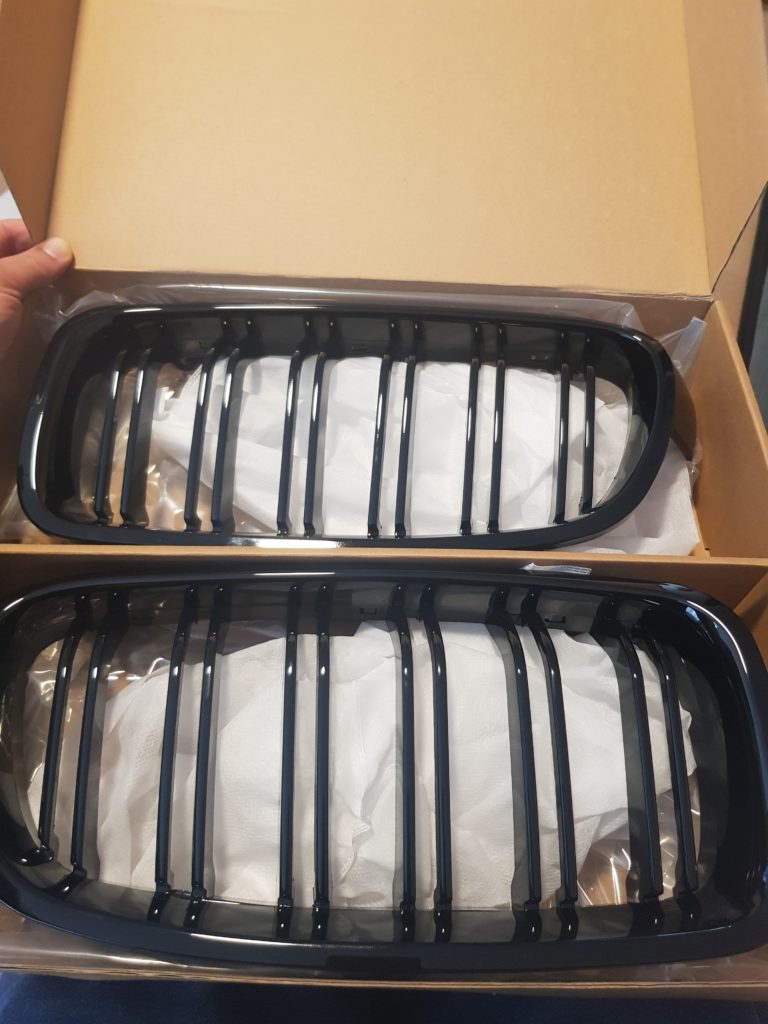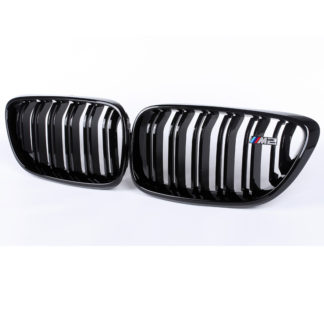Car Audio • Practical Buying & Repair Advice
Fix or Upgrade Your Car Radio? A Complete, Brand-Aware Guide for U.S. Drivers
Whether your radio just lost sound or you’re craving Apple CarPlay/Android Auto, this detailed guide walks you through when to repair your existing unit and when to upgrade—with cost ranges, decision tables, and brand/model considerations for common U.S. vehicles.
Quick Decisions (At-a-Glance)
| Situation | Fix | Upgrade |
|---|---|---|
| Simple, cheap fault (fuse, loose harness, antenna, minor solder joint) | Yes — Quick, cost-effective | No benefit unless you want new features |
| Unit repeatedly fails or has known display/power issues | Only if under warranty or very low cost | Yes — Reliability + features improve |
| CarPlay/Android Auto, Bluetooth streaming, backup cam desired | Not applicable to most factory units | Yes — Primary reason to upgrade |
| Factory audio integrated with vehicle settings (climate/vehicle menus) | Often — Keep OEM to retain integration | Possible with brand-specific dash kits & interfaces |
| Repair quote >= 50–60% of a solid new head unit | Lower priority | Yes — Better long-term value |
| Classic/collector where originality matters | Yes — Preserve OEM look | Consider “retro-look” modern units |
Step 1 — Diagnose the Problem
| Symptom | Likely Cause | Typical First Move | Fix vs. Upgrade |
|---|---|---|---|
| No power | Blown fuse, failed ignition/power wire, internal regulator, dead unit | Check fuses & 12V at harness; inspect ground | Fix if fuse/wiring; upgrade if main board failure |
| No sound but unit “plays” | Amplifier (factory/Bose/JBL) not waking, speaker short, mute line | Inspect amp remote lead & speaker outputs | Fix wiring/amp; upgrade if amp obsolete |
| Poor FM/AM reception | Antenna base/cable corrosion, diversity amp failure, window grid break | Test with known-good antenna | Usually fix antenna path |
| Frozen touchscreen or dead pixels | Failed digitizer or LCD | Hard reset; check TSBs | Upgrade if panel or module is pricey |
| Bluetooth drops / no CarPlay | Old BT stack; no CP/AA support | Firmware update (if available) | Upgrade for stable CP/AA & modern BT |
When to Fix Your Existing Radio
- Low-cost issues: fuses, wiring, antenna, simple solder reflow.
- OEM integration: radio controls climate/vehicle settings or ties into advanced driver info screens.
- Originality matters: classic or leased vehicles where modifications are discouraged.
- Warranty/recalls/TSBs: some failures are known and covered; always check first.
When to Upgrade Your Radio
- You want Apple CarPlay/Android Auto, better navigation, voice assistants, or modern Bluetooth.
- Recurring failures or the head unit is slow/unsupported.
- Sound quality is poor; you plan to add an external DSP/amp/sub later.
- You’ll keep the car for years — the usability upgrade pays off daily.
Typical Cost Ranges (Parts + Labor)
| Item/Service | Budget | Mid-Range | Premium |
|---|---|---|---|
| Fix – Simple electrical (fuse, wiring, antenna) | $20–$120 | $120–$250 | $250+ |
| Fix – Display/digitizer or main board work | $180–$350 | $350–$600 | $600–$900+ |
| Head Unit – Mechless single-DIN (BT, USB) | $100–$180 | $180–$260 | $260–$350 |
| Head Unit – 2-DIN touchscreen (CarPlay/AA) | $250–$400 | $400–$700 | $700–$1,200+ |
| Install peripherals (dash kit, SWC, amp interface) | $80–$200 | $200–$400 | $400–$800+ |
Guideline: If the repair quote is ≥ 50–60% of a modern CarPlay/AA unit installed, upgrading usually wins on value and features.
What You Gain by Upgrading (Feature Matrix)
| Feature | Old OEM Radio | Modern Aftermarket | Notes |
|---|---|---|---|
| Apple CarPlay / Android Auto | Rare on pre-2016 models | Common (wired/wireless) | Maps, messages, music, voice assistants |
| Bluetooth reliability & codecs | Often older stacks | Newer chipsets | Fewer dropouts, better call quality |
| Backup/360 camera support | Model-dependent | Widely supported | Retain factory cam with the right interface |
| Sound customization (EQ/DSP) | Basic bass/treble | Multi-band EQ, time alignment | Big perceived quality jump |
| Firmware support | Ends after model cycle | Longer aftermarket updates | Varies by brand |
Brand & Model Family Considerations (U.S. Market)
Integration complexity varies a lot. Use this table to anticipate parts and decisions before you choose fix vs. upgrade.
| Brand & Popular Models | Dash/Integration Notes | Factory Audio Packages | Upgrade Difficulty | What Often Makes Sense |
|---|---|---|---|---|
| Toyota — Camry, Corolla, RAV4, Tacoma, 4Runner | Generally DIN/2-DIN friendly; recent models have integrated screens | JBL options in mid/high trims | Low → Medium | Upgrade for CarPlay/AA on older years; fix simple antenna/power faults |
| Honda — Civic, Accord, CR-V, Pilot | Many models accept 2-DIN; late-model screens are integrated | Premium amp in some trims | Low → Medium | Upgrade for features; retain SWC via adapter |
| Ford — F-150, Explorer, Escape, Mustang | SYNC systems; some use unique bezel sizes | Premium amps (B&O) in higher trims | Medium | Upgrade with SYNC-retention kits; fix if SYNC screen-only failure and kit cost is high |
| Chevrolet/GMC — Silverado/Sierra, Equinox, Tahoe/Yukon | Unique dash shapes; OnStar integration | Bose amps common | Medium → High | Upgrade with GM-specific interfaces; fix Bose amp faults if cost-effective |
| Ram — 1500/2500/3500 | Large Uconnect screens, climate on screen | Alpine/Harman options | Medium → High | Upgrade only with proper Uconnect retention; fix if climate integration is at risk |
| Nissan — Altima, Rogue, Sentra | Generally mod-friendly; some trims tight on space | Bose in mid/high trims | Low → Medium | Upgrade older units; check Bose amp turn-on for “no sound” fixes |
| Hyundai — Elantra, Sonata, Tucson; Kia — Forte, Optima/K5, Telluride | Many models allow 2-DIN; newer screens integrated | Infinity/Harman in higher trims | Low → Medium | Upgrade for CP/AA; fix common antenna issues cheaply |
| Subaru — Outback, Forester, Crosstrek | Starlink integration; some tall bezels | HK amps in upper trims | Medium | Upgrade with model-specific dash kits; fix if HK amp is the only fault |
| Volkswagen — Jetta, Golf/GTI, Tiguan | CAN integration; some screens read vehicle settings | Fender/Beats in certain trims | Medium | Upgrade with CAN/SWC adapters; fix if cluster menus depend on OEM unit |
| Jeep — Wrangler, Grand Cherokee | Uconnect; dash kits needed on some generations | Alpine/HK in upper trims | Medium | Upgrade for trail nav/CarPlay; fix if only the amp/antenna failed |
| BMW — 3 Series, 5 Series; Mercedes-Benz — C/E/GLC; Audi — A4/Q5 | MOST fiber-optic networks; screens handle vehicle menus | Harman/Kardon, Burmester, B&O | High | Either fix OEM or use MOST-retention solutions; upgrades need fiber-to-analog interfaces |
| Tesla — Model 3/Y/S/X | No traditional head unit; functions consolidated | All-in-one infotainment | Very High | Generally fix/replace OEM components; aftermarket “radios” do not apply |
Note: Trims with branded amps (Bose, JBL, B&O, HK, Alpine) often require specialized amp retention or high-level adapters to keep factory speakers working correctly with an aftermarket head unit.
Compatibility & Parts Checklist
If You’re Fixing
| Item | Why It Matters |
|---|---|
| Fuse map & multimeter | Confirm power/ground; avoid unnecessary parts |
| Antenna base/cable | Restores weak AM/FM quickly |
| Service manual / wiring diagram | Identify amp remote, CAN/MOST paths |
| Touchscreen panel/digitizer | Cost-effective if only the glass failed |
If You’re Upgrading
| Part | Purpose |
|---|---|
| Dash kit & mounting brackets | Fills factory opening cleanly (single/2-DIN) |
| Vehicle-specific wiring harness | Plug-and-play power/speaker connections |
| Steering-wheel control (SWC) adapter | Retains volume/track buttons |
| CAN/MOST/OnStar/Uconnect interface | Keeps chimes, safety alerts, camera, factory amp |
| Backup camera (or retention harness) | Adds or preserves rear-view functionality |
| Microphone & GPS antenna (if needed) | Clear calls and accurate nav |
Decision Flowchart (Text Version)
- Is the issue a simple electrical/antenna problem? If yes → Fix.
- After a basic fix, does the radio meet your needs? If yes → Keep. If no → continue.
- Do you want CarPlay/AA, better Bluetooth, backup cam, or better sound? If yes → Upgrade.
- Is your OEM unit tightly integrated (climate/vehicle menus)? If yes → either Fix or use a retention interface to Upgrade.
- Compare costs: If repair ≥ 50–60% of a modern installed head unit → Upgrade.
DIY vs. Professional Installation
| Approach | Pros | Cons | Best For |
|---|---|---|---|
| DIY Fix | Cheapest; fast for simple faults | Risk of dash damage; limited diagnostic tools | Fuses, harness reseats, antenna swaps |
| DIY Upgrade | Save labor; learn your car | Complex on CAN/MOST vehicles; fit & finish challenges | DIN-friendly Japanese/Korean models |
| Professional Install | Clean fit; feature retention; warranty on labor | Higher cost | Luxury brands, trucks with Uconnect/SYNC/OnStar |
FAQ
Will I lose steering-wheel controls if I upgrade?
No—use a vehicle-specific SWC adapter. Many retain voice, volume, and track buttons.
Can I keep my factory backup camera?
Often yes with the right camera retention interface. Check your vehicle’s video signal type before buying.
Is wireless CarPlay/Android Auto worth it?
It’s convenient (no cable) but can be slightly less consistent than wired on some systems. If budget is tight, wired is perfectly fine.
What about cars with premium factory amps (Bose/JBL/HK)?
They usually require specialized amp integration modules. Skipping them can cause low volume, noise, or no sound.
I drive a Tesla—can I “upgrade the radio”?
Tesla doesn’t use a traditional head unit. Most “upgrades” are OEM-style component replacements or add-on modules; fix is typically the path.



Replaced my cracked laptop screen with this one and it works flawlessly. Crisp visuals, fast shipping, and easy installation. Would definitely buy again!
The screen fits perfectly, was easy to install, and works just like the original. Bright, clear display with no dead pixels. A great value for the price—highly recommended!
Love this thing. It folds down so small but still looks great in my office or when I bring it home. Holds the MacBook Pro just perfectly.
Since school is all online this year, I had to upgrade my desk setup to feel more comfortable and for it to be more efficient. I bought this hoping to achieve that and so far it has been super nice, it’s important to be able to keep my computer from overheating and being able to be eye to eye with my screen! I love it! Works great
My nephew likes this stand for his table. He says it really helps with his art work.